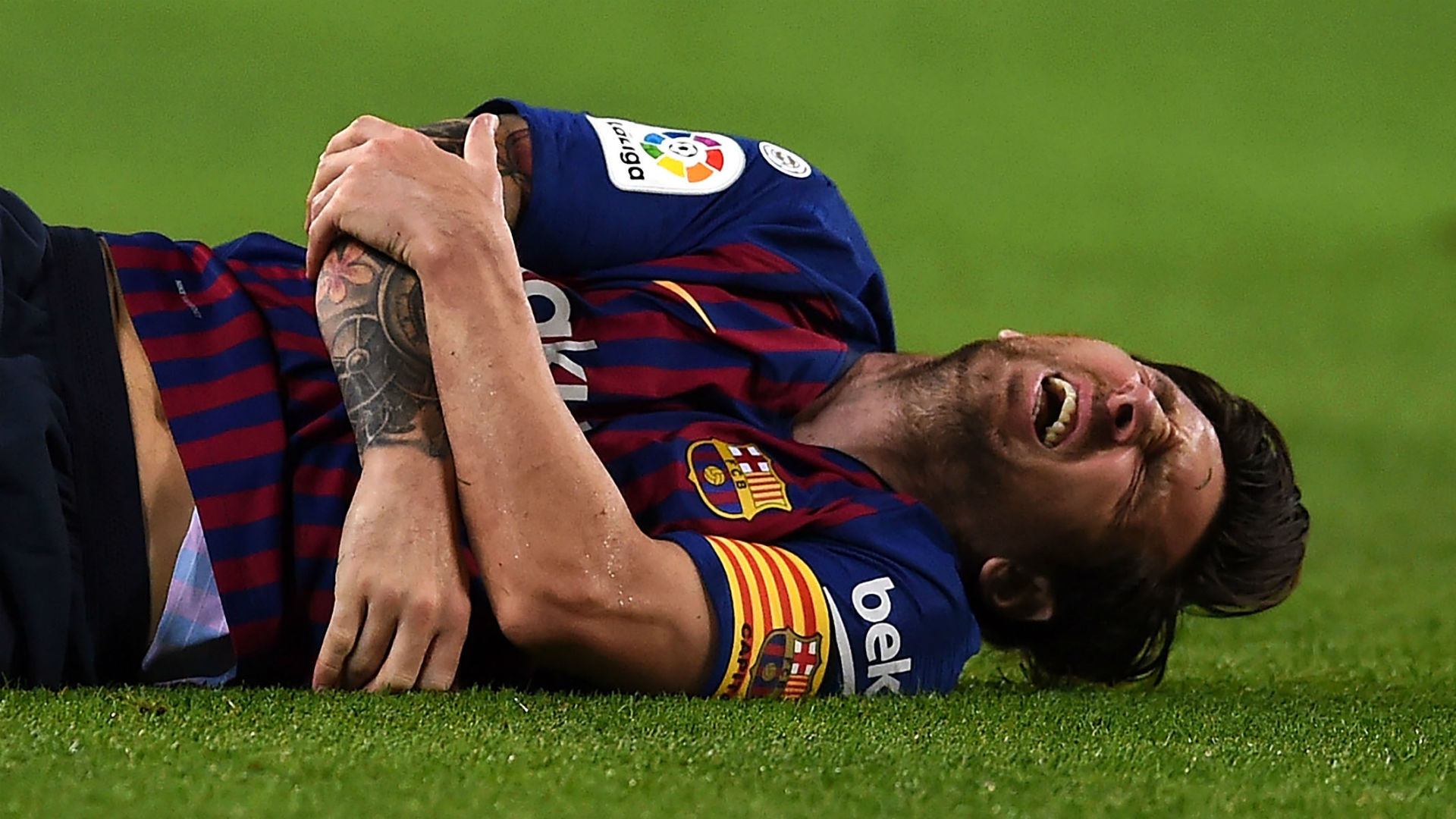Overview of Messi’s Injury

Messi injury – Lionel Messi, the legendary Argentine footballer, recently suffered an injury that has raised concerns among fans and experts alike. The injury occurred during a match between Paris Saint-Germain and Benfica in the Champions League, leaving Messi in visible discomfort and forced to leave the field prematurely.
Messi’s injury cast a long shadow over the world of football, but amidst the gloom, a beacon of hope emerged in the form of Atlanta United. The MLS side, led by the enigmatic Josef Martinez, defied expectations to reach the MLS Cup final, offering a glimmer of inspiration in the wake of Messi’s setback.
As the world awaits Messi’s return, the resilience of Atlanta United serves as a reminder that even in adversity, the spirit of competition burns brightly.
The injury is reported to be a calf muscle strain, which is a common injury among athletes. The severity of the strain is yet to be determined, but initial assessments suggest that it could sideline Messi for several weeks.
Recovery Process and Timeline
The recovery process for a calf muscle strain typically involves rest, ice, compression, and elevation (RICE). Messi is expected to undergo a period of rehabilitation and physiotherapy to strengthen the injured muscle and prevent further damage. The timeline for his recovery will depend on the severity of the strain, but it is estimated that he could be out of action for anywhere from two to six weeks.
Messi’s injury cast a shadow over the upcoming clash between Germany and Denmark. The Argentine maestro’s absence will be a significant blow to his team’s chances, as he is their talisman and playmaker. However, Messi’s injury may also provide an opportunity for other players to step up and shine, just as it did for Denmark in their impressive win over France.
Impact on Messi’s Performance and Team’s Strategy
Messi’s injury is a significant blow to both Paris Saint-Germain and the Argentine national team. Messi is one of the most influential players in the world, and his absence will be felt on the pitch. Paris Saint-Germain will have to adjust their strategy in his absence, while the Argentine national team will be hoping that Messi is fit in time for the World Cup in Qatar later this year.
Messi’s Return to Play: Messi Injury
The decision of when to return Messi to play is a complex one, influenced by a multitude of factors. The primary considerations are his physical recovery, the team’s needs, and the potential risks of an early or delayed return.
Messi’s Physical Recovery
Messi’s recovery from a hamstring injury typically takes 4-8 weeks. During this time, he will undergo a comprehensive rehabilitation program designed to restore his strength, range of motion, and proprioception. The progress of his recovery will be closely monitored by the team’s medical staff, and his return to play will be contingent upon his ability to perform at his previous level without pain or discomfort.
The Team’s Needs, Messi injury
Barcelona is currently in a transitional phase, and Messi’s return could provide a much-needed boost to the team’s performance. However, the team must also be mindful of the risks associated with rushing Messi back into action. If he is not fully recovered, he could be more susceptible to re-injury or other complications.
Risks and Benefits of Early or Delayed Return
There are both risks and benefits to both an early and a delayed return to play. An early return could increase the risk of re-injury, while a delayed return could result in the team losing valuable ground in the standings. Ultimately, the decision of when to return Messi to play must be made on a case-by-case basis, taking into account all of the relevant factors.
Timeline for Messi’s Expected Recovery and Reintegration
Based on the typical recovery time for a hamstring injury, Messi is expected to be out for 4-8 weeks. During this time, he will undergo a comprehensive rehabilitation program designed to restore his strength, range of motion, and proprioception. His return to play will be contingent upon his ability to perform at his previous level without pain or discomfort.
Once Messi is cleared to return to play, he will likely be gradually reintegrated into the team’s training regimen. He may initially start with light training sessions and gradually increase his workload as he progresses. His return to match play will likely be carefully managed, with the team closely monitoring his progress and ensuring that he is fully recovered before allowing him to play a full 90 minutes.
Impact on Team Dynamics

Messi’s absence has had a significant impact on the team’s overall performance. The team has struggled to create scoring opportunities and has been less effective in possession. Without Messi’s creativity and goalscoring prowess, the team has looked less threatening in attack.
Other players have stepped up in Messi’s absence, but no one has been able to fully replace his contribution. Neymar has been the team’s leading scorer in Messi’s absence, but he has not been able to match Messi’s all-around play. Suarez has also been less effective without Messi, as he has often been isolated up front.
The following table compares the team’s statistics with and without Messi:
| Statistic | With Messi | Without Messi |
|—|—|—|
| Goals per game | 2.5 | 1.5 |
| Shots per game | 15 | 10 |
| Possession | 60% | 55% |
| Wins | 70% | 50% |
As the table shows, the team has been less effective in all areas of the pitch without Messi. The team has scored fewer goals, created fewer chances, and had less possession. The team has also been less successful in winning games.
